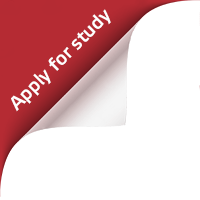For discrete stochastic simulations, the laboratory is equipped with ExtendSim Suite software.
The software enables modelling of discrete and continuous processes in 2D and 3D environments.
The models can be linked to graphical documents (e.g. technical building plans) and databases. The results can be subjected to extensive statistical analysis and the simulated processes can be linked to optimization algorithms.
For the simulation of complex dynamic systems, the laboratory is equipped with Vensim Professional software.
The software is designed for simulations in the field of System Dynamics, it is equipped with algorithms for dimensional and sensitivity analysis of the model, allows model calibration, policy optimization, Kalman filtering or Monte Carlo simulation. Interfacing with external data sources is possible. For the creation of management simulators, the laboratory is equipped with the Sable Developer superstructure. This superstructure allows the creation of graphical user interfaces and the free distribution of the runtime for distribution to the client in the case of custom research.
For analyzing the efficiency of production units, the laboratory is equipped with DEA Frontier software.
The software allows for the calculation of efficiency, super-efficiency, and the Malmquist index for an unlimited number of units. It provides tools for calculating convex, non-convex, network, and dynamic DEA models, models with constant and variable returns to scale, and DEA models with congestion.
For project modeling and analysis, the laboratory is equipped with A-dato's LYNX & TameFlow software.
The software enables multi-project and portfolio management, time analysis of projects, scheduling and resource management, task, time, and project tracking, optimization of communication within project teams, and much more. It includes planning and project management using the Critical Chain method. The license for A-dato's LYNX also includes consultation time for individual projects.
For mathematical modeling and optimization, the laboratory is equipped with MATLAB software.
The software supports linear (simplex, dual-simplex, interior-point) and quadratic mathematical programming (interior-point, trust-region-reflective), nonlinear programming (quasi-Newton, Nelder-Mead Simplex, interior-point, sequential-quadratic-programming, trust-region-reflective), integer and mixed-integer (branch and bound algorithm, cutting planes), and multi-objective programming (goal attainment). Simulink is an add-on that enables the creation of extensive computer simulations (both discrete and continuous).
The aforementioned software in the laboratory is licensed to allow for scientific research as well as contract-based and commercial use.
To support information processing, the laboratory is equipped with Tovek Tools Analyst Pack for educational and research purposes.
This software allows the conversion of data and documents into full-text indexes enriched with extracted entities and metadata. It facilitates entity extraction and provides context analysis to display relationships between defined topics. Content analysis combines linguistic and statistical methods. Additionally, the software supports social network analysis, temporal analysis, and geospatial analysis.

